Program Accepted Design Exhibitions
ISWC 2018 Design Exhibition
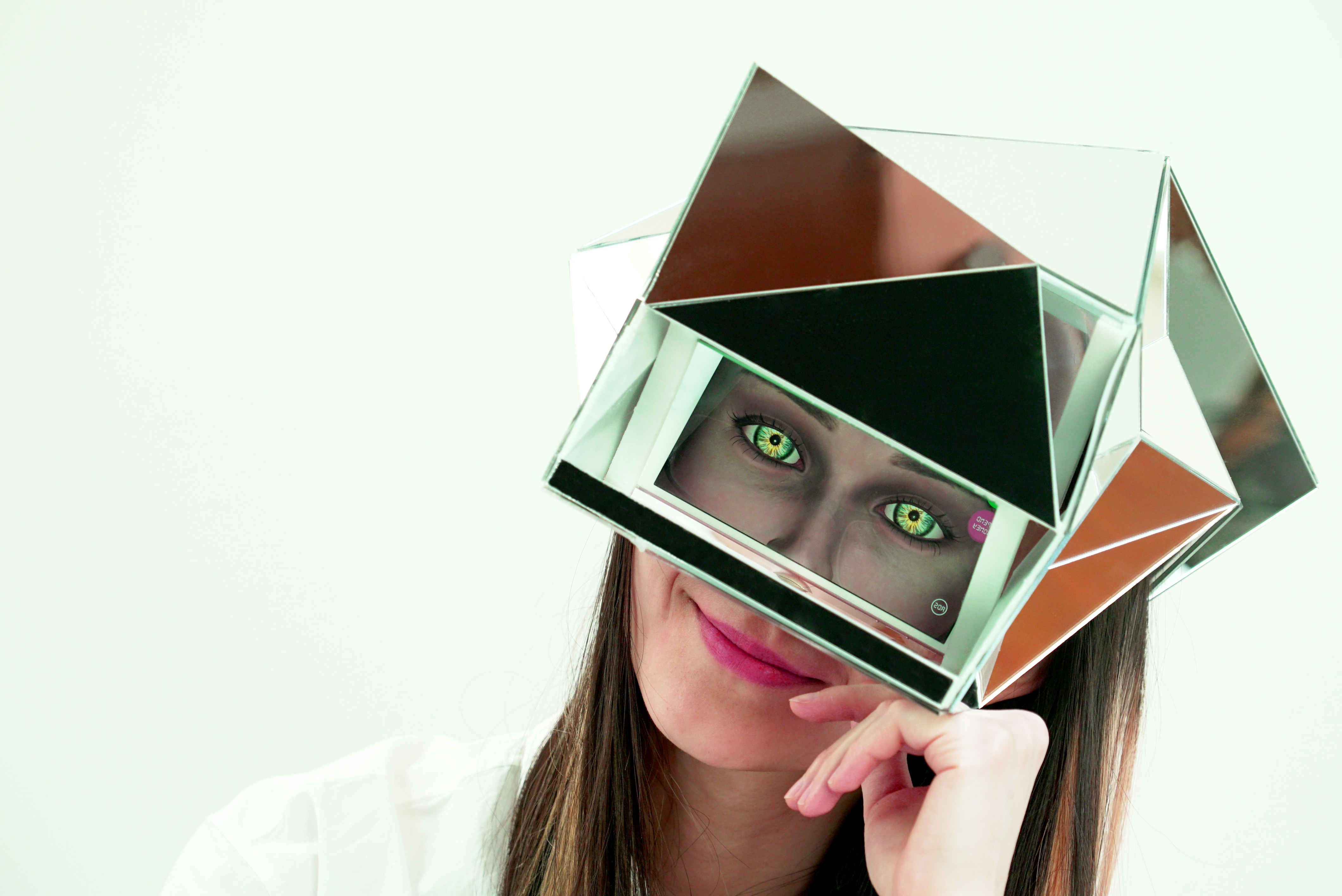
TransVision: Exploring the State of the Visual Field in the Age of Extreme Augmentation
Human perception has long been influenced by technological breakthroughs. An intimate mediation of technology lies in between our direct perceptions and the environment we perceive. Through three extreme ideal types of perceptual machines, this project defamiliarizes and questions the habitual ways in which we interpret, operate, and undestand the visual world intervened by digital media. The three machines create: Hypersensitive vision – a speculation on social media’s amplification effect and our filtered communication landscape. Hyper-focused vision – an analogue version of the searching behavior on the Internet. Hyper-commoditized vision – monetized vision that meditates on the omnipresent advertisement targeted all over our visual field. The site of intervention is the visual field in a technologically augmented society. All the three machines have both internal state and external signal. This duality allows them to be seen from outside and experienced from inside.
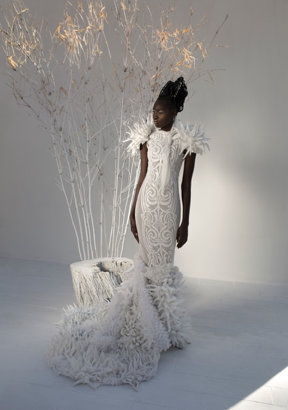
Sense: Coral Reef Inspired and Responsive Dress
Sense is a responsive garment that visualizes the global phenomenon of coral bleaching. Sense examines the current scientific shift in which technology converges with biology and embody the beauty, power and fragility of nature. This project explores aesthetic territory at the intersection of traditional textile techniques and wearable technologies. In contemporary fashion design, biomimicry inspiration provides alternative ways to express and communicate in the networked, hybrid physical-digital domain, and the urge of dying coral reefs.
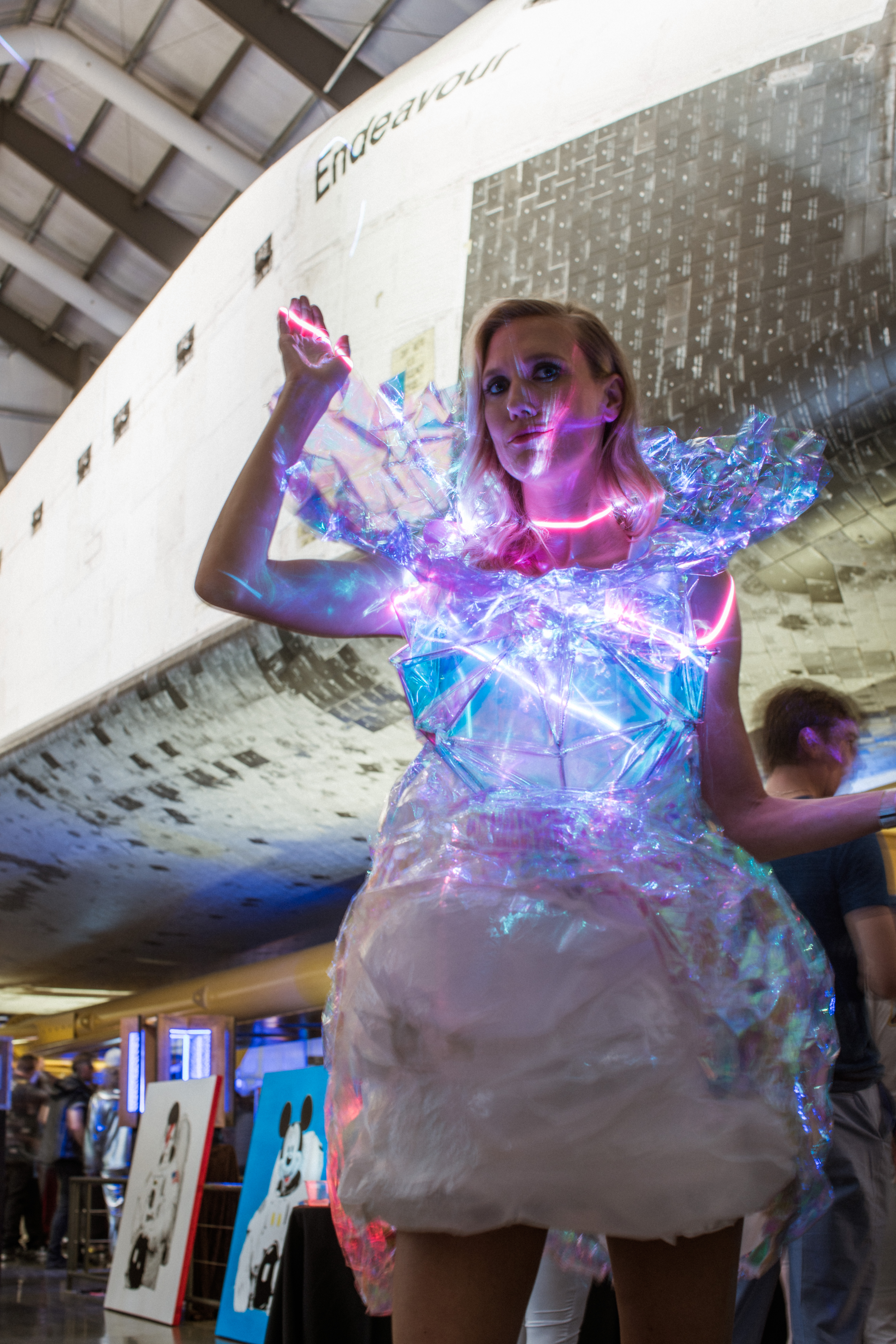
Nanogami: The Microbiome Expanded. Speak Your Truth. Listen To Your Gut.
Nanogami is a bioresponsive garment to visualize the importance of the microbiome on collective wellbeing. The microbiome is the group of bacteria, viruses, and cells that live within and on our bodies. This galaxy of particles makes up more than half of the human body and are noted to be responsible for overall health and mood. From nano–micro sensations, Nanogami’s dichromic origami fabric seeks to visualize this micro-galaxy with mood sensing, breath monitoring, and inflatable actuation to assist in ideal homeostasis. Within the concept of extimacy, showing the internal states to the external world, the Nanogami becomes a self monitoring, mediated textile to illuminate and provoke wellbeing with real-time visual and haptic feedback.
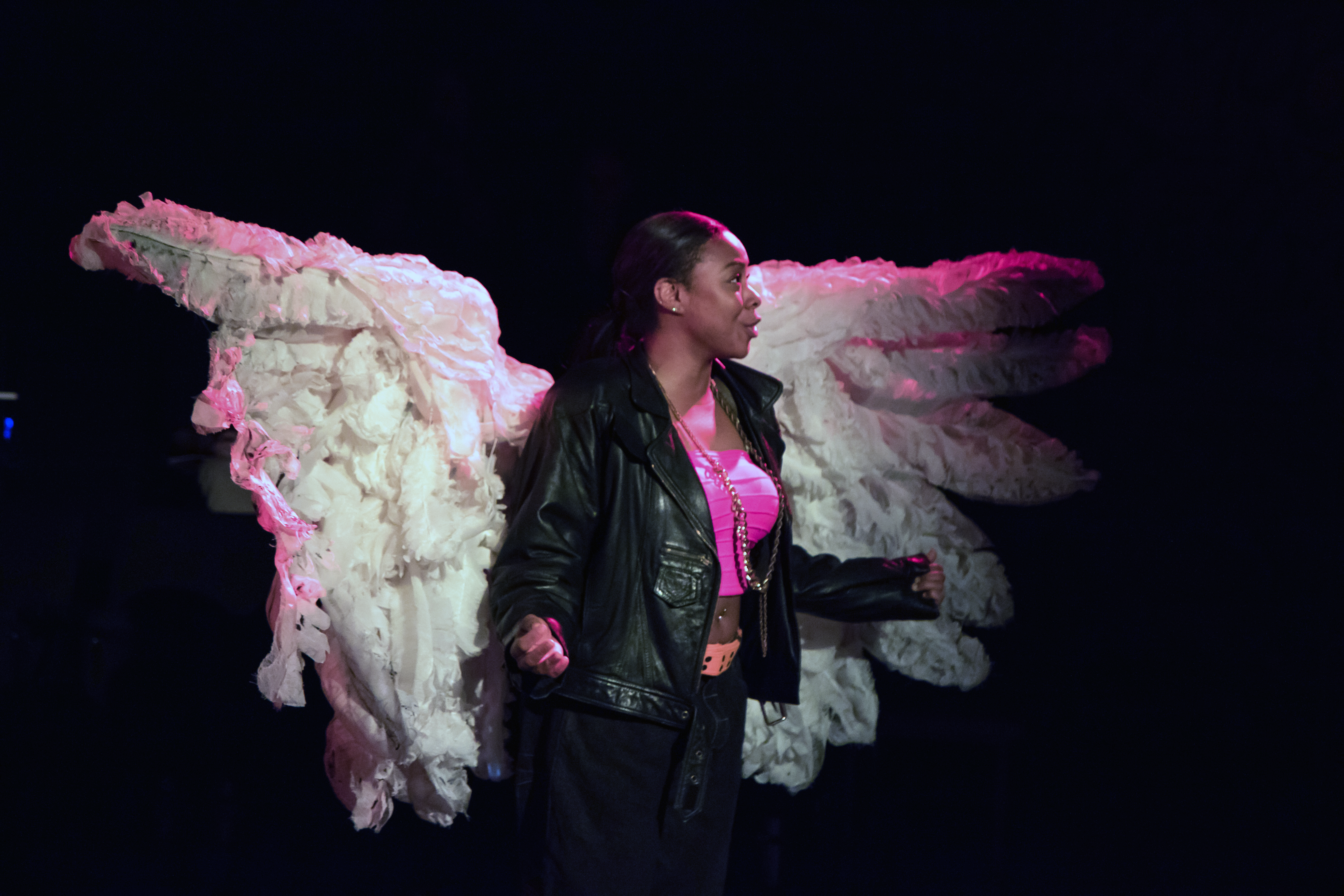
Smart Material Actuated Angel Wings for Live Theatrical Effect
The University of Minnesota Mechanical Engineering Department, in collaboration with the Theater Arts & Dance Department, designed and built smart material actuated angel wings for the theater production of José Rivera’s play Marisol. The wearable angel wings were designed for a lifelike mechanical effect on stage and utilized Nickel-Titanium (NiTi) shape memory alloy (SMA) springs to facilitate wing spreading. The design challenge in building the wings came from the need to coordinate aesthetic, structural, mechanical, and electrical requirements to culminate in a successful theatrical effect. Each design element needed to complement one another to fulfill the design constraints provided by the costume designer and director of the production. The aesthetic design drew influence from Baroque Catholic art and early 90’s grunge fashion for dramatic effect. The wing structure was inspired by the skeletal structure of swan wings, which resulted in the design of a smart material actuated mechanical linkage that mimicked the shape and motion of swan wings. A hidden electrical circuit with a simple pushbutton switch provided the actor with control over the wing movement. The unique design constraints that came with designing a mechanism for theatrical use, along with the close collaboration between the two departments, led to the creation of a successful wearable mechanism with dramatic stage effect.
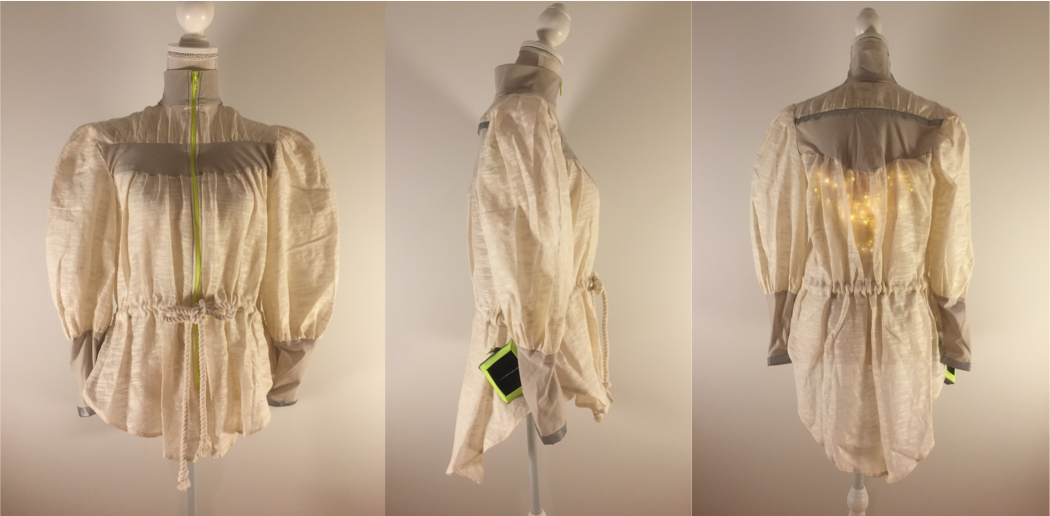
Lady Harberton: An interactive cycling outfit incorporating solar powered LED sensor lights
To examine creative smart clothing design for sports and fitness a fastest growing wearable market, the current study examined an interactive cycling outfit incorporating solar powered LED sensor lights. The completed garment design contributes to eco-design approaches for sustainability, history of fashion (1890’s the Rational Cycling Outfit) and aesthetic appeal of clothing. Semi-transparent Hanji fabrics (made with paper mulberry by Korean traditional paper making techniques) and high-tech trim materials (e.g., 3M reflective strips, stretch air-mesh fabric, fluorescent tape) were used to complete the garment part of the current design. This study will fill the gap in the literature for exploring creative design ideas and techniques to design smart clothing for cycling. The area of current smart clothing research would be beneficial for educators to create impactful new interdisciplinary design programs and course contents by incorporating wearable technology, containing new emerging concepts that can aid students to expand their personal and professional spheres in global industry. For designers and marketers in the wearable technology industry, this study will also suggest future research direction on smart clothing design to address aesthetic aspects desired by consumers. Finally, this design shed new light on the fashion history of the late Victorian fashion through the re-interpretation of the Rational Cycling Outfit.
Garment-based EMG System for Intra-spacesuit Biomechanics Analysis
The mechanism of astronaut injuries inside rigid spacesuits is not well understood, due to difficulty visualizing intra-spacesuit body motions. An alternative method is to record muscle activation signals with electromyography (EMG); however, the conventional EMG procedure requires bulky, extensive eletrode/wire setup and is susceptible to signal noise. To address these challenges for aerospace applications of EMG, we designed a garment-based system to collect EMG data from upper body muscle activities inside spacesuits. Constructed with form-fitting textiles and careful management of on-garment tensions, our garment provides a viable non-invasive EMG study solution that maximizes applicability and subject mobility while resisting motion artifacts. The functionality and usability of our design was also validated with a human subject test, which showed standard-quality signal, easy on/off process, minimal electrode/wire setup, and simple wire bulk management, as opposed to the conventional methods.
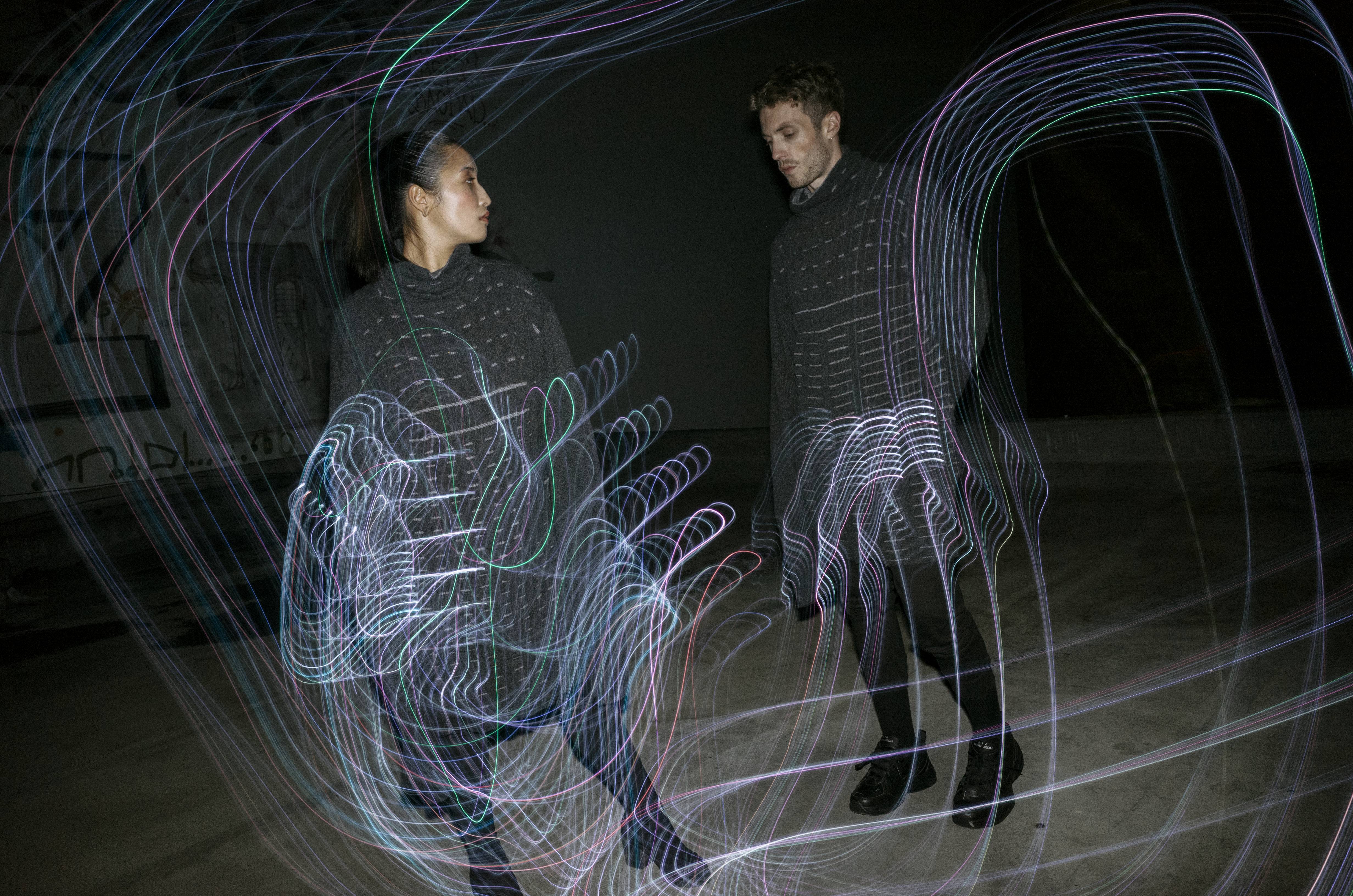
Power of Proximity Metacommunication Between Garments
The Power of Proximity fashion tech collection creates a network between garments to show what users have in common with each other. The collection uses a mesh network to link the garments where pre-processed data taken from social media is stored locally on a micro-controller. Once the garments are connected to the same network they exchange data and an algorithm determines the commonalities between the users. Infrared signalling is used to tell if the wearers are facing each other and when that happens an array of LEDs then displays the level of commonalities. The level changes if the users spend time together. The two garments are knitted from merino wool and cashmere and designed so that the electronics are seamlessly embedded into them to create a soft interface around the body.
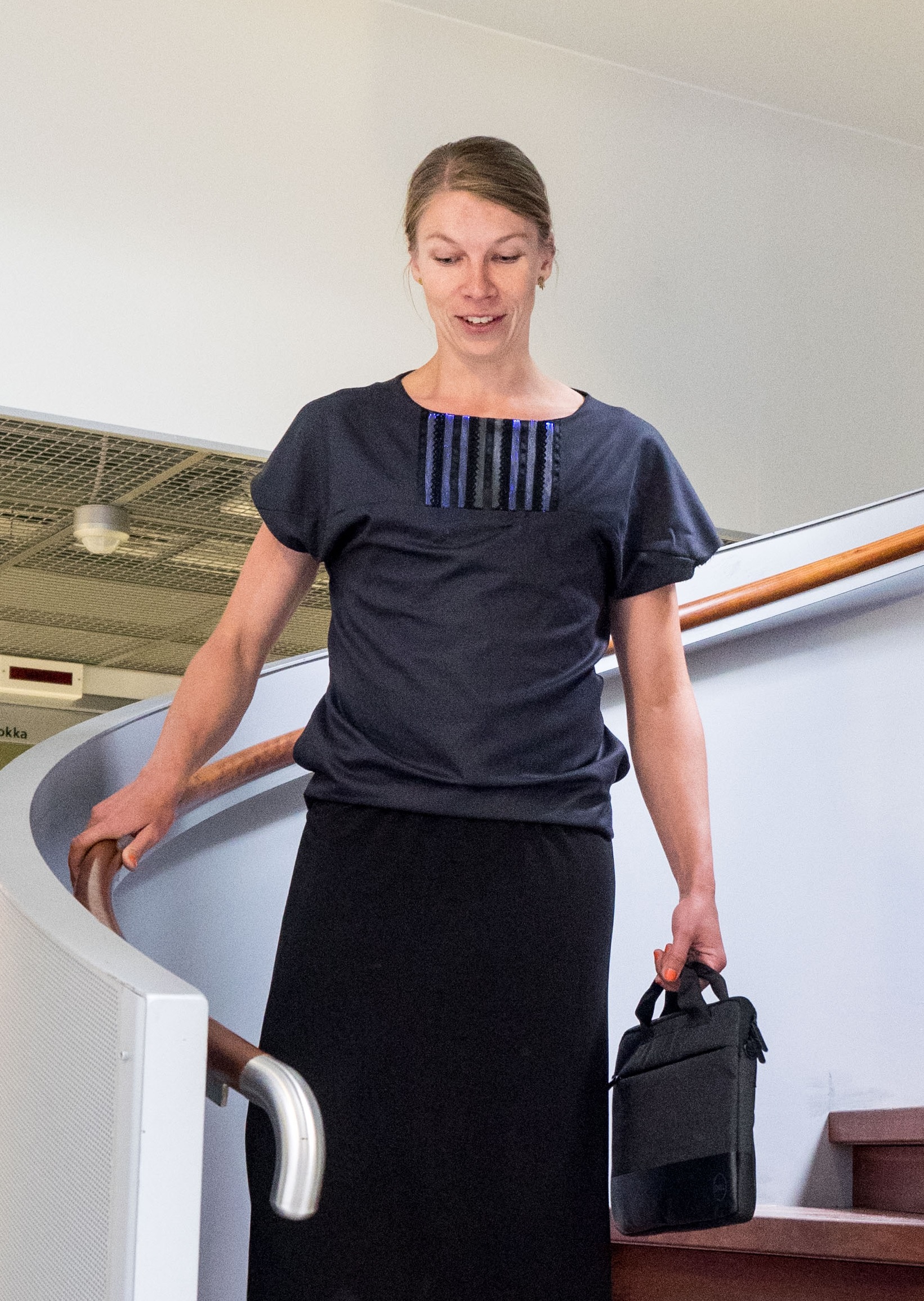
Idle Stripes Shirt - Ambient Wearable Display for Activity Tracking
We present the design and prototype of the Idle Stripes shirt, which is an aesthetic, clothing-integrated display, reflecting the wearer’s physical activity in an ambient manner. The design is targeted to be smart business-wear for an office worker, which creates awareness of immobility periods during typical sitting-intensive office work. Long periods of such sitting are known to be health risks. The Idle Stripes shirt promotes healthy working, encouraging the wearer to break up their office desk work with walking breaks. The design prototype is constructed of a fabric with integrated optical fibers, which are illuminated based on the sitting time detected by an app running on the wearer’s mobile phone.

MAKE IT BLUE: A Controllable, Color- Changing Dynamic Costume
This work translates an inspiration derived from the Disney classic “Sleeping Beauty” to realize a smart child’s costume with color-changing capabilities. The dress uses addressable multi-color NeoPixel LEDs to change its surface color based on input from two wand controllers, consistent with the animated sequence in which Princess Aurora’s fairy godmothers argue over the best color for her gown. The garment’s construction emphasizes diffusion of emitted light to achieve a more uniform color distribution, and explores benefits and drawbacks of two manufacturing methods for embedding LED pixels: a manual method based on hand-soldered wire connections consistent with typical electronic craft, and a more scalable surface-mount manufacturing method based on stitched traces and reflow soldering.

Embodisuit: A Wearable Platform for Embodied Knowledge
The Embodisuit allows its wearer to map signals onto different places on their body. Informed by embodied cognition, the suit receives signals from an IoT platform, and each signal controls a different haptic actuator on the body. Knowledge is experienced ambiently without necessitating the interpretation of symbols by the conscious mind. The suit empowers wearers to reconfigure the boundaries of their selves strengthening their connection to the people, places, and things that are meaningful to them. It both critiques and offers an alternative to current trends in wearable technology. Most wearables harvest data from their users to be sent and processed elsewhere. The Embodisuit flips this paradigm such that data is taken in through the body instead. Furthermore, we believe that by changing the way people live with data, it will change the type of data that people create.

Empathy Amulet: A Wearable to Connect with Strangers
The Empathy Amulet is a wearable interpretation of Philip K. Dick's empathy box from his novel Do Androids Dream of Electronic Sheep?. In the novel, thousands of people were anonymously connected with each other both haptically and emotionally when they grabbed the handles of their empathy boxes. The Empathy Amulet similarly networks a group of strangers together through shared experiences of physical warmth. It is not yet another technology for staying in touch with people you already know (and falling short). Rather, it encourages its wearer to make a deliberate and generous choice to invest their time and energy in connection with strangers, and it incorporates reciprocity into its design, such that helping oneself means helping other people. In today's world, people are less likely to feel empathy towards those not in their immediate network of family and friends, and, despite a proliferation of connective technologies, loneliness is on the rise. Surprisingly, it is the perceived sense of loneliness, and not actually being physically alone that has numerous health consequences for a significant portion of the population. Lakoff and Johnson's theory of embodied mind asserts that our physical and subjective experiences are inextricably linked, and the Empathy Amulet leverages the powerful connection between the physical experience of warmth and the subjective experience of social connectedness to combat loneliness and cultivate a stronger sense of connection with strangers.